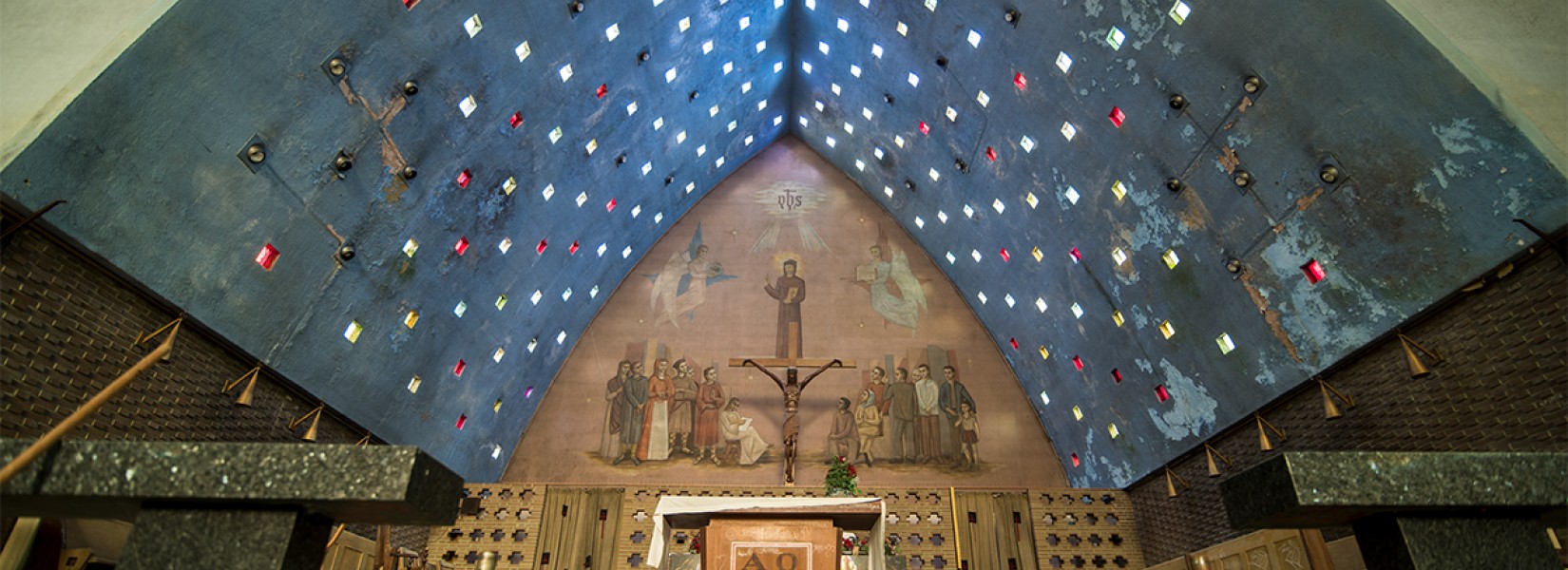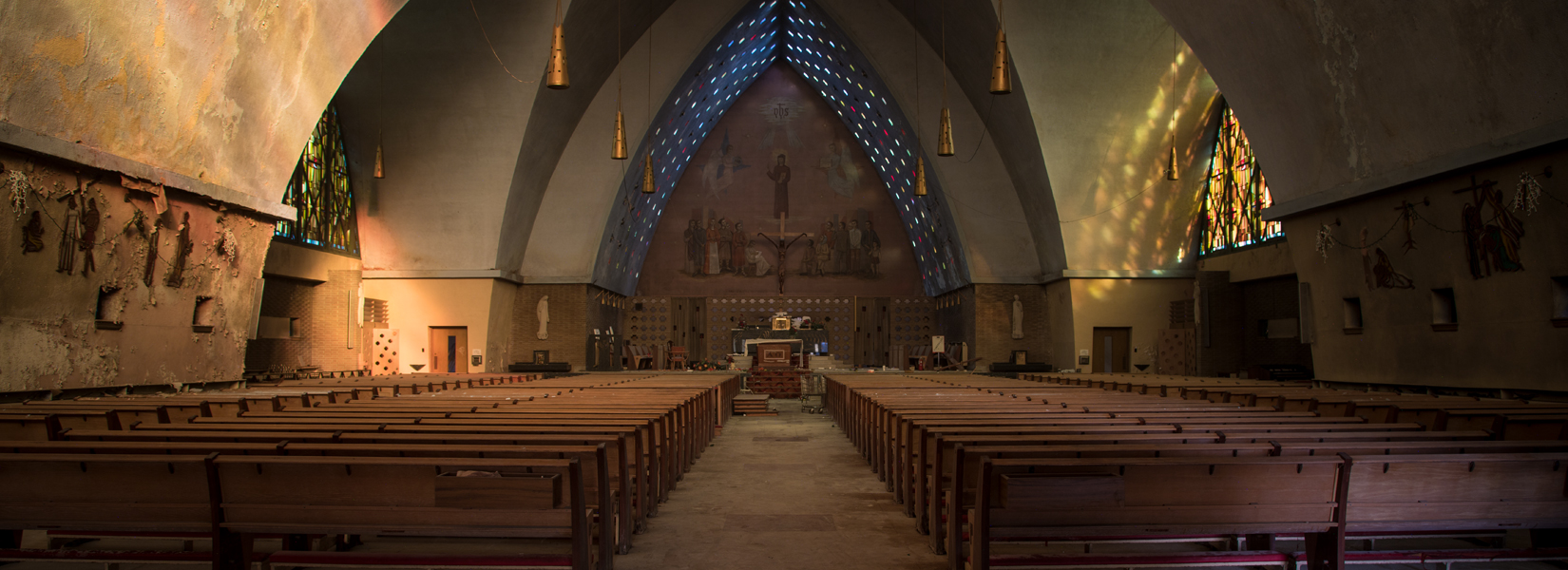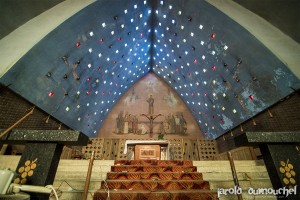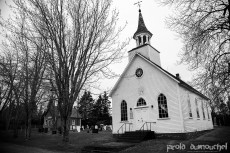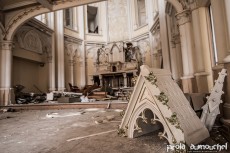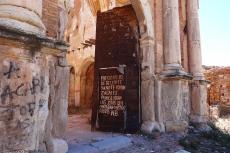In 1892 begins the construction of the St. Andrew's church in this small village somewhere in Gaspésie. While the land was formerly occupied by the Mi'kmaq, the region was soon settled by Scots in the nineteenth century followed by Irish, English...
The church with cubic stained-glass windows
Vestige of a rural past
Closed in 2013, this church located along the highway has today a very sad mine. From the outside, a section of its stone wall presents risks of collapse and inside, the passage of many vandals is no doubt.
Located in an old village on the island of Montreal that quickly became urbanized after the Second World War, the construction of this church was completed in 1962. The plans are signed by the architect Edgar Courchesne who participated, among others , to the construction and renovation of the Saint Joseph's Oratory.
The interior of the church looks like a concreted cavern, but the square stained-glass windows in the vault above the altar offer a modern or even timeless aspect. Behind the altar, a small corridor hidden by a brick wall leads on one side to the vandalized sacristy, where the statues have their faces painted in blue and where one of them, is hanged in the closet.
On the other side, the corridor leads to a room where bibles and other liturgical objects were stored. Everywhere, traces of vandalism are present. Besides, the hinges of the door leading to the presbytery have been cut by the hacksaw, left behind.
The corridor leading to the presbytery is cluttered with paper coin wrappers. The safe is open, confirming the absence of any property of value whatsoever. Thieves certainly went through there in search of a hypothetical treasure. Perhaps it would be good to remind them that if around ten churches close their doors every years year in Quebec, it is mainly because they can no longer make ends meet.
The presbytery looks like a convent. The place is huge and, surprisingly, is not at all vandalized. Upstairs, several rooms testify the past presence of religious. The rooms are modest, but are larger that some abandoned convents already visited. Small lounges with chairs and sofas suggest a life in modesty.
Surprisingly, this part of the building is still electrified. In the kitchen, the old fridge purrs and the light of the cupboard where the chasubles (ceremonial garment of the priest) are stored automatically lights up when the door opens. We also might think that the household has been made not so long ago.
The future of this abandoned church is uncertain. If it still belongs to the religious community which bears the name of the church, it is a safe bet that its future is doomed to destruction. With a book value of nearly $ 4 million and many required emergency repairs, there is a good chance that it will be sold in the next few years. Starting from this, we can imagine that in a few years there will be an office tower or other modern building, leaving behind the rural past of this territory.
Related content
Built in 1895, the Beaver Creek Free Methodist Church is almost abandoned. Even if the church is actually still in use a few weeks of the year, the place is abandoned for the rest of the year.
Desolate and alone, it stands in perfect...
It is at high speed that the old convent of the Sisters of the Redemption undergoes the thunders of vandals who are looking for strong sensations.
Classified as a heritage building, the religious community deserted it in the mid-1990s for...
We are in September 1937 in the small village of Belchite located about 50 kilometers from Zaragoza. The Spanish Civil War has been raging for a year already and thousands of Spaniards died. By the end of the conflict in April 1939, they will be...

